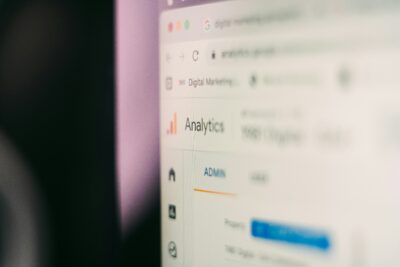Our journey to AI Search Optimization
How 1.5 years of research, testing, and experimentation led us to a new approach to brand visibility in the age of artificial intelligence.

Less than two years ago, the search landscape looked entirely different. Traditional search engines dominated, and brands focused mainly on SEO based on Google’s algorithms. Everything began to change when the first generative language models emerged – capable of holding conversations and providing human-like answers.
After more than 18 months of intensive work, we can proudly say that we didn’t just watch the changes – we were part of them. Our journey to AI Search Optimization is a story of research, discovery, and building a completely new approach to brand visibility in the era of artificial intelligence.
Our journey to AI Search Optimization is a story of research, discovery, and building a completely new approach to brand visibility in the era of artificial intelligence.

Stage I: Researching AI’s impact on search
We began with observing the rapidly growing popularity of tools like ChatGPT. AI started playing a new role – not just answering user questions but increasingly replacing traditional search engines.
We started with analyzing how AI was changing the way consumers search for information. We tested various types of queries to see what kinds of answers were returned. We monitored the development of language models as they gained new features like category links, product suggestions, images, and so-called “deep research” capabilities.
Then we started asking ourselves: Are brands present in these answers? And if so – how do they get there?
Stage II: Testing external links and content
Next, we tested how external content and links influenced AI-generated responses. We examined which sources were cited, which domains were considered trustworthy, and how to influence the appearance of brand mentions in responses from ChatGPT, Gemini, Claude, or Copilot.
Meanwhile, the market was evolving quickly. More and more language models started combining generative capabilities with traditional web search.
We knew we were witnessing the birth of a new search category – AI search.
Stage III: Experimenting with AI Search content optimization
The next step involved experiments in optimizing data and content structures. We combined traditional SEO knowledge with the new reality of generative AI. We tested:
- What content structures are best processed by AI models,
- Whether length, language, and format affect visibility in responses,
- How models interpret data from schemas, tables, PDFs, and product descriptions,
- Whether language model bots can “see” content rendered via JavaScript.
The goal was clear: understand the technical success factors that determine whether a brand gets noticed by AI.
Stage IV: Discovering a new brand visibility channel
Through this work, we discovered more than just a new tactic – we identified a completely new communication channel between brands and users.
It wasn’t just Google, Facebook, or YouTube anymore. Brands were showing up in conversations people were having with AI. And that changed everything – it opened up new ways to reach potential customers way earlier in their journey, before they even thought about visiting a website or filling out a contact form.
AI became another – early – brand touchpoint, where users receive recommendations, summaries, and comparisons – often without visiting a website. And we knew how to get there.

Stage V: The birth of AI Search Optimization
The result of this journey is our AI Search Optimization service – a comprehensive approach that enables brands to become visible in AI-generated answers.
It’s more than traditional SEO. It’s a new discipline that combines:
- Source analytics for content used by AI models,
- Content optimization for “AI readability,”
- Technical data preparation (structured data, rich snippets, metadata),
- And active management of brand presence in AI ecosystems.
Stage VI: Our Internal Tools
To maximize the efficiency of our work, we approached the task ambitiously. We developed a series of scripts designed to:
- Evaluate content based on specific ranking criteria used in LLMs,
- Convert content into vectors and embeddings to achieve excellence in semantic-related tasks,
- Semantic Booster – a gem that uses semantics and knowledge graphs to help us optimize content by enhancing cosine similarity values,
- A script for identifying content gaps, which, based on knowledge graphs, entities, and their attributes, indicates topics, categories, and subcategories that should be created to fill semantic clusters.
As a result of our R&D efforts, in addition to constantly evolving and refining our methods, we’ve also deepened our understanding of semantics – after all, what better way to explore new areas than through hands-on practice and tool development?
What does AI Search Optimization deliver?
Our service helps brands:
- Appear in AI responses when users ask about products, comparisons, rankings, or recommendations,
- Increase visibility and trust in this new information channel,
- Optimize content and data structures to meet language model requirements,
- And build a competitive edge where many companies haven’t even begun to act.

How to measure AI Search effectiveness?
One of the most frequent questions we hear from brands implementing AI Search Optimization is: How do we measure results?
Unlike traditional SEO or PPC campaigns, AI-powered search channels do not offer standard analytics tools or direct metrics like clicks or rankings.
That’s why we developed an approach based on:
- Citation tracking,
- Monitoring brand presence in AI answers,
- Domain visibility,
- And sentiment analysis of AI-generated content.
We analyze whether a brand is mentioned, how often, in what context, and based on which sources. We also assess how these answers impact user behavior and conversion in later stages of the buying journey.
To dive deeper, we recommend the article “Measuring Data from Generative Chatbots”, which outlines available methods and tools for analyzing brand presence in AI-generated content and building your own systems to monitor these interactions.

What’s next?
We believe AI Search Optimization is a lasting shift in how digital marketing works. Language models are becoming the new “advisors” to consumers, and brands that learn how to collaborate with them will gain long-term advantages.
Our journey continues – we constantly track model development, test new strategies, and support our clients in becoming leaders in a world where the search engine has a human-like face… and a language model under the hood.



